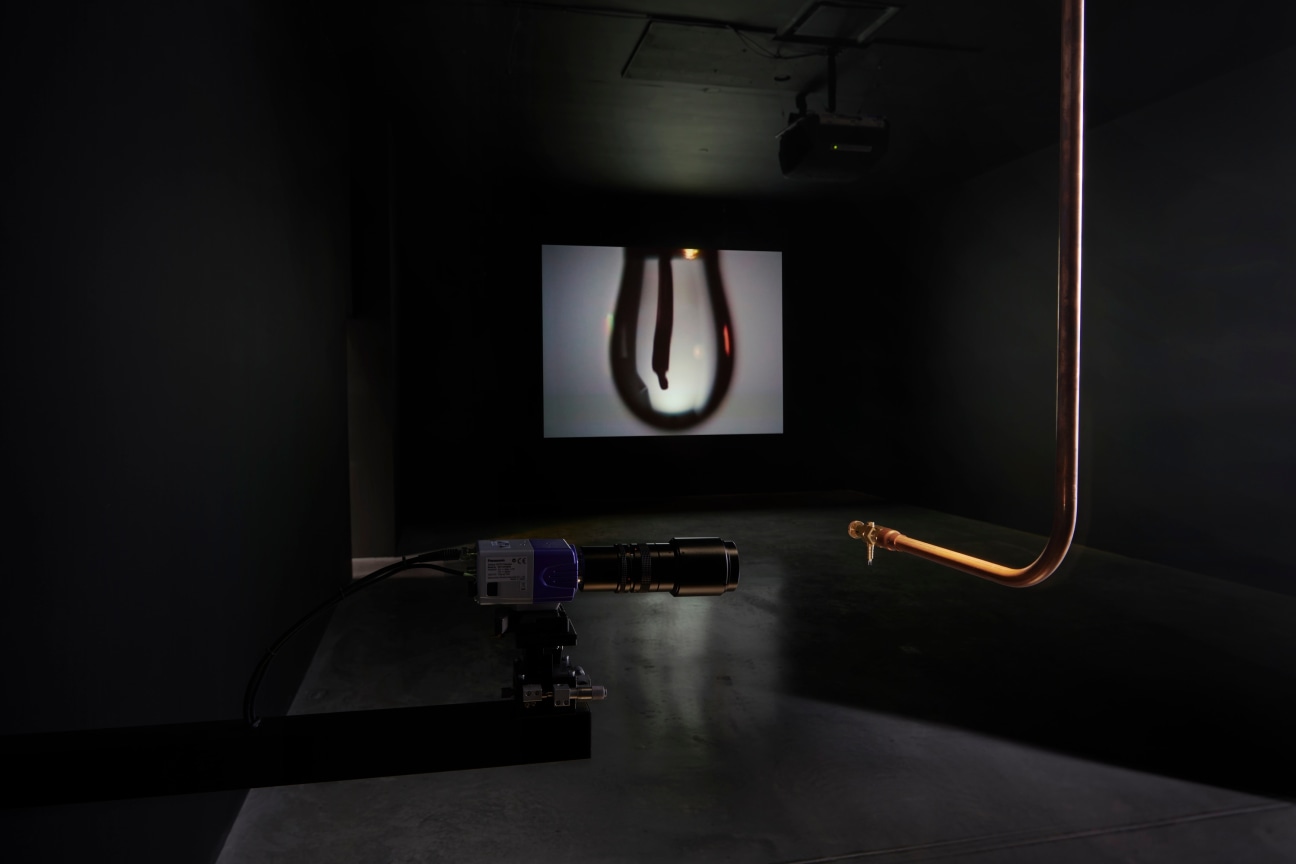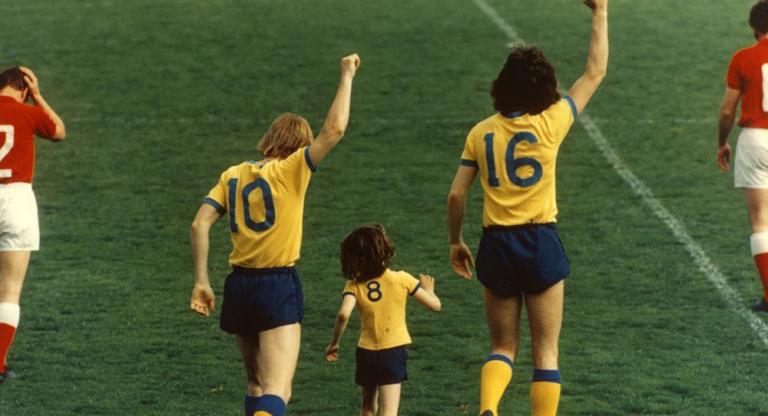In 1970, Bill Viola and his classmates at Syracuse University built one of the first experimental video production and post-production centers in New York. Synapse was a student-run network comprising a two-way cable system and color-video studio where the aesthetic and technical possibilities of multi-camera live video could be explored. With undergraduate training as a studio engineer, Viola is, according to J. Hoberman, “among the first artists to work in video without first having served an apprenticeship in some older field.”
Viola met Alvin Lucier and Robert Ashley in 1972 and David Tudor, Gordon Mumma, and David Behrman in 1973, when Viola co-founded the Composers Inside Electronics Group to produce the electroacoustic environment for Tudor’s Rainforest IV (1973). Recently reimagined at MoMA, Rainforest is an array of suspended and scattered resonant objects that visitors perambulate.
Three years after Rainforest IV, Viola made the installation He Weeps for You (1976) at Synapse. Water slowly drips from a small valve in a darkened space, with a color video camera connected to a projector that reports live the swelling drop. As it grows, the drop increasingly magnifies the fish-eye effect, immersing the viewers of the work in the captured image. When the drop falls onto an amplified drumhead, the room booms and resets.
When I visited this work as it is currently installed at James Cohan Gallery in Tribeca, I enjoyed playing with the color variation from auto-balancing features of the camera. A red sweater gives the entire aqueous scene a rosy glow. Viola wrote about how the installation evokes a tuned space, “where not only is everything locked into a single rhythmic cadence, but a dynamic interactive system is created where all elements (the water drop, the video image, the sound, the viewer, the room) function together in a reflective and unified way as a larger instrument.”
Beginning in 1977, Viola produced The Reflecting Pool, a collection of video tapes beginning with a 7-minute work that showcases Viola’s editing techniques and subject matter. For the work, Viola left the confines of a studio and set up his camera at the end of an outdoor pool in upstate New York. The artist can be seen winding through the arcadian vista before arriving at the pool and facing the camera. When he jumps up to perform a cannonball, things start to get strange. Temporality across the image plane breaks into an electronic photo-montage that Viola called “sculpting with time,” similar to Andrei Tarkovsky’s notion of “sculpting in time” that would become the title of his 1985 book on art and cinema.
Today, rear projected onto a rigid screen in the gallery, The Reflecting Pool feels both fantastic and ancient. Resisting cacophony or didacticism, the exhibition is a spare duet of sonically and spiritually inclined works.
Bill Viola runs through March 25 at James Cohan Gallery.



